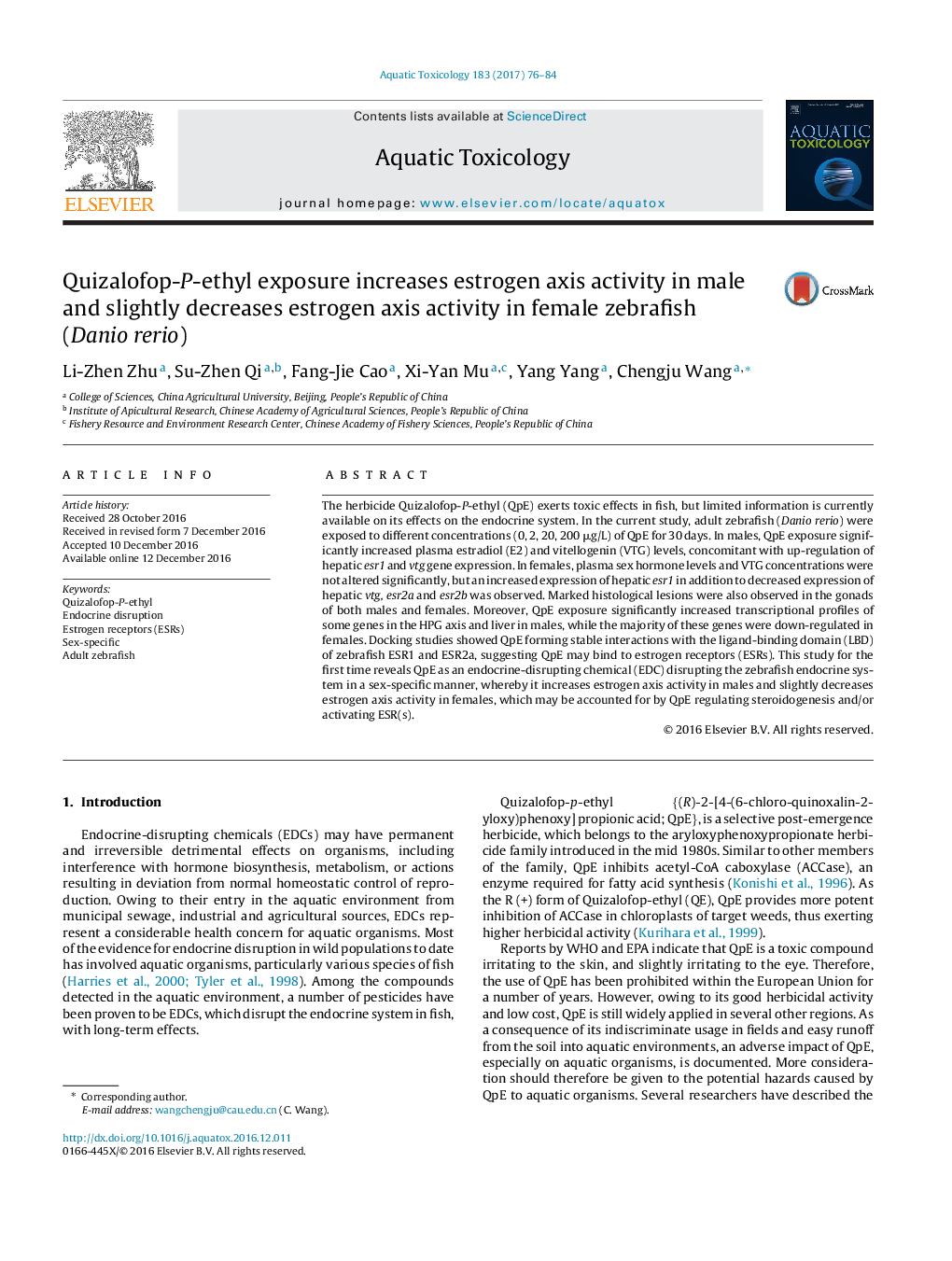| Article ID | Journal | Published Year | Pages | File Type |
|---|---|---|---|---|
| 5764203 | Aquatic Toxicology | 2017 | 9 Pages |
Abstract
The herbicide Quizalofop-P-ethyl (QpE) exerts toxic effects in fish, but limited information is currently available on its effects on the endocrine system. In the current study, adult zebrafish (Danio rerio) were exposed to different concentrations (0, 2, 20, 200 μg/L) of QpE for 30 days. In males, QpE exposure significantly increased plasma estradiol (E2) and vitellogenin (VTG) levels, concomitant with up-regulation of hepatic esr1 and vtg gene expression. In females, plasma sex hormone levels and VTG concentrations were not altered significantly, but an increased expression of hepatic esr1 in addition to decreased expression of hepatic vtg, esr2a and esr2b was observed. Marked histological lesions were also observed in the gonads of both males and females. Moreover, QpE exposure significantly increased transcriptional profiles of some genes in the HPG axis and liver in males, while the majority of these genes were down-regulated in females. Docking studies showed QpE forming stable interactions with the ligand-binding domain (LBD) of zebrafish ESR1 and ESR2a, suggesting QpE may bind to estrogen receptors (ESRs). This study for the first time reveals QpE as an endocrine-disrupting chemical (EDC) disrupting the zebrafish endocrine system in a sex-specific manner, whereby it increases estrogen axis activity in males and slightly decreases estrogen axis activity in females, which may be accounted for by QpE regulating steroidogenesis and/or activating ESR(s).
Related Topics
Life Sciences
Agricultural and Biological Sciences
Aquatic Science
Authors
Li-Zhen Zhu, Su-Zhen Qi, Fang-Jie Cao, Xi-Yan Mu, Yang Yang, Chengju Wang,
